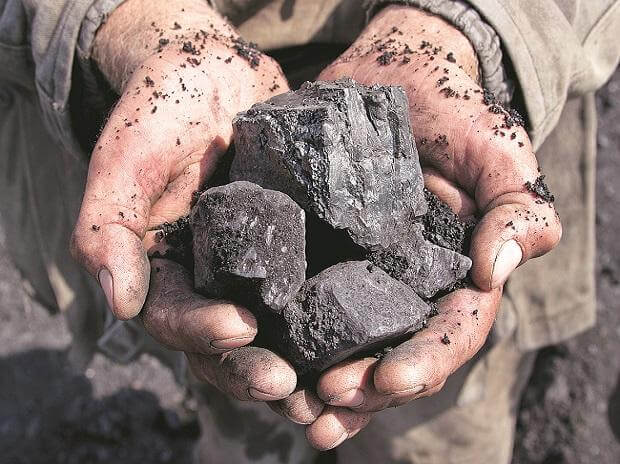Paradigm Shift in Agriculture is Needed to Ensure Farmer Welfare and Food Security

Vaishali Basu Sharma
Consultant ,PPFLast month India lost agricultural scientist Monkombu Sambasivan Swaminathan, fondly known as the father of India's green revolution. MS Swaminathan who was 98, and had been keeping ill for some time was chiefly responsible for developing a hybrid wheat seed that allowed Indian farmers to dramatically increase yields and shed external reliance for food, by trebling annual crop in just 15 years. Today India uses a large portion of its farmland to produce wheat, rice, and cotton, and is also a major producer of spices and pulses for the global market. Advancements in technology are revolutionising the agricultural sector in India, but the domain still faces several challenges that impact its productivity and sustainability.
Given the urgency of the climate crisis and global conflicts, nations are becoming more mindful of global food security, and agriculture is evolving into a dynamic arena. There are however challenges that continue to hamper productivity and sustainability. Speaking to the media in May 2008, Swaminathan had said, “The Green Revolution created a sense of euphoria that we have solved our production problem. Now we have a plateau in production and productivity. We have a problem of under investment in rural infrastructure.”
For around 58% of India's population, agriculture is their major source of income, providing livelihood to over 151 million people During 2020-21 the share of agriculture in gross domestic product (GDP) has reached almost 20 per cent. Agriculture and allied sectors which include forestry and fisheries contribute over 24 percent to the country’s gross value added (GVA), and the crops sector has a GVA share of 55.33 percent in the overall agriculture and allied sector in India. But despite India's increased productivity in crop yields, they are still just 30% to 60% of the best crop yields achievable in the farms of developed as well as other developing countries. Additionally, losses after harvest due to poor infrastructure and unorganised retail cause India to experience some of the highest food losses in the world. The rice–wheat cropping system (RWCS) is the backbone of Indian farming especially in the northern states of Uttar Pradesh, Punjab, and Haryana. There has been a gradual increase in the production of rice, and in the financial year 2023, India's estimated production volume of rice was over 130 million metric tons. Record-high prices and favourable weather conditions encouraged farmers to increase planting acreage and choose high-yielding varieties, leading to a record-high wheat production estimate in 2023. However, the continuous RWCS cropping pattern in northwest India has its own set of repercussions, such as the exhausting nutrient pool in soil and herbicide resistance in crop species, groundwater depletion, escalating production cost, environmental pollution due to crop residue burning and enhanced greenhouse gas emissions. Free electricity continues to cause excessive drawal of underground water in these states. Furthermore, rice productivity in India is still less than half that of China.
Other staples productivity in India is similarly low. Pulses and oilseeds, stapes of dryland agriculture, continue to stagnate. For instance, India is one of the largest producers of pulses, and yet faces a persistent shortfall in the production of tur (arhar) dal, necessitating significant imports from African countries to meet the demand-supply gap. Maharashtra, Karnataka and Uttar Pradesh are top three producers of tur dal in India, but farmers continue to be heavily reliant on monsoon and bear the brunt when the rains are erratic.
Monocropping system, increased and frequent use of fertilisers and pesticides that cause considerable damage to the soil's biological structure, increased cost of cultivation, deterioration of groundwater, are some of the other issues that plague Indian agriculture. Irrigation systems are still inadequate, leading to crop failures in some parts of the country because of lack of water. In other areas regional floods, poor seed quality and inefficient farming practices, lack of cold storage and harvest spoilage cause over 30% of farmer's produce to go to waste. Lack of organised retail and competing buyers thereby limiting Indian farmer's ability to sell the surplus and commercial crops.
One of the major problems is that over the decades the average holding size of farm holdings has been decreasing, because of endless subdivision. In 1970–1971 the average holding size was 2.28 hectares; this decreased to 1.82 hectares in 1980–1981,1.50 hectares in 1995–1996, and 1.08 hectares in 2015-2016. Today the average size of land holdings is less than one hectare and in some areas it is less than even 0.5 hectares. These small holdings are financially unsustainable, and contribute to increasing gaps in big and small farmer incomes. Unless these small holdings can collectively pool their land and find solutions towards farming a bigger plot together, harvest does not reap potential benefits.
During its G20 presidency India has succeeded in highlighting as part of its strategic future, its contribution as one of the most important food producers in the world. Several initiatives including schemes for crop insurance, irrigation, soil testing, electronic national agricultural market (e-NAM), and use of Aadhaar for the public distribution system (PDS) and purchase of fertiliser have positively impacted agricultural development. However, deeper structural reforms that focus on Reducing farm income and increasing uncertainties due to climate change are yet to be implemented. The three agricultural laws promulgated by the Indian government in June 2020 were protested by the farmer community in India, over the concern that the laws would dilute the role of large, regulated wholesale markets and make it easier for big agribusinesses to deal directly with farmers in an unregulated space, fearing that minimum support prices (MSPs) would disappear.
India will have to reset incentives to encourage cropping patterns that are better attuned to local ecologies. Rural farmers continue to rely on local traders and middlemen to sell their produce at a loss because there are no reliable marketing facilities. Farmers get lower prices of the produce because it is costlier to transport their commodity and hence do not directly benefit from MSPs. Imbalanced fertiliser use is skewing the chemical composition of soils, which are hardening and retaining less moisture. The nation incurs food losses about $14 billion worth post-harvest losses, due to inefficiencies in its cold supply chain. Development of better cold storage facilities will lead to farmers no longer being restricted to only crops that are resilient and do not require refrigeration and can explore several high cash yielding options like fruits
Finally the significance of research-driven agricultural innovations which can foster greater food security cannot be emphasised enough. However, state agricultural universities (SAUs), which are best placed to undertake locally relevant research, face a cash crunch. World-class agricultural research, conducted through multi-stakeholder collaborations, should play a central role in identifying priorities and innovations to realise the much-needed transformation of agri-food systems. The future of agriculture and those engaged within it are set to profound transformation in the coming decades accordingly, a new set of solutions are required to create an enabling environment to deal with a paradigm shift in agriculture, through appropriate policies and institutions, an enabling regulatory environment, development of frontier technologies, as well as public and private investments in agriculture and agri-business.
The author is an analyst of strategic and economic affairs. She is currently associated with New Delhi based think tank Policy Perspectives Foundation. She has previously worked as a consultant with India’s National Security Council Secretariat for nearly a decade. She is editor of PPF’s bimonthly newsletter PRISM






